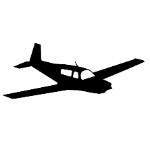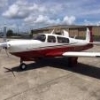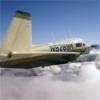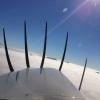Leaderboard
Popular Content
Showing content with the highest reputation on 07/03/2016 in all areas
-
So after a few weeks of delays due to panel cutting and then silk screening 3rd party vendor delays, I finally completed acceptance testing and brought her home today. I'm thrilled. :-)7 points
-
There are probably bigger differences with Mooney pilots than there are with Mooney planes! Best regards, -a-3 points
-
I'm thinking of selling my very nice M20C. It's in great condition. It looks great. It has been very well maintained with no expense spared on maintenance. And it has one of the best equipped (non-glass) panels you'll find in a C. It has every speed mod available from LASAR. Don Maxwell claims it's the fastest C he's ever flown. So if you're looking for a top of the line C, this is it. I'll be flying it to Oshkosh this year and it will wear a For Sale sign there. After over 200 hours of long cross country travel in the last two years, I've decided to move up to an M20K. 1964 Mooney M20C N6XM sn:2805 For Sale $57,500 Airframe: 6074 Hours Total Time Since New. This plane is regularly flown, approximately 150 hours per year for the last few years. Engine Specs: 1154 Hours Total Time Since Lycoming Factory Overhaul. (Lycoming O-360-A1D, 180 HP, 2000 TBO). Prop: 640 Hours Total Time Since Overhaul with New Hub (no more recurring AD). 2 Blade Hartzell, Overhauled by Sensenich. Avionics/Radios: Garmin GNS-530W WAAS GPS / Nav / Com / Color Map. Garmin GMA-340 Audio Panel / Intercom. Garmin GTX-330ES Transponder with ADSB Out STEC System 30 Autopilot with Altitude Hold. Century NSD-360 HSI coupled to GNS-530W King KX-155 Digital Nav Com with Glide Slope. CYA-100 Angle of Attack indicator. GEM G2 Engine monitor with fuel flow. 2nd Standby Electric Attitude Indicator. Additional Equipment: ‘201’ Sloped Windshield ‘201’ Cowl Closure Mod ‘201’ Spinner ‘231’ Wingtips Modified All Metal Instrument Panel (Standard Configuration) ACK 406mhz ELT LED Landing Light Flap Gap and Aileron Gap Seals, Flap, Rudder and Elevator Hinge Covers, Wing Root Fairings, Dorsal Fin Mod with Cuff LASAR Jackpoint/Tiedown Rings InterAv Alternator Conversion Unison Electronic ‘Shower of Sparks’ Slick Magneto upgrade (replaces starting vibrator) Vernier Throttle/Mixture/Prop Controls Inertial Reel Pilot and Co-Pilot Shoulder Harnesses Davtron Digital Chronometer/Timer/Clock New Style Shock Discs on All Gear Manual Gear (Johnson Bar) and Flaps New Style Knots / Miles Airspeed True Airspeed Indicator Insight Avionics Graphical G2 Engine Monitor with Fuel Flow Exterior 8/10 Complete Strip and Repaint in 2002. Matterhorn White over Seminole Red with Black Trim. Interior 8/10 New Leather covered Ovation style yokes with PTT and AP controls built in. New yokes include new thick walled control shafts. (Eliminates recurring AD) Leather Interior. Completely refurbished in 2007. Two tone Beige Seats. Leather trim on side panels. Beige Carpets. Inspection Status: Annual Due Oct 2016. IFR Certifications Due May, 2017. 12/2008 Complete Strip and Reseal of Fuel Tanks by Midwest M20 with the new style polyurethane sealer. Very Good Maintenance History. Two most recent annuals by Don Maxwell. 1984 gear up landing. Airframe log starts in 1984 with the repair. Engine and Prop logs are complete starting with overhauls.2 points
-
Congrats on the new J! If you're concerned, even in the slightest, find an instructor to ride shotgun... But... the airplanes (E vs. J) are very similar. They fly very similar (as do all mooney's), as well (same wing, same motor, same push pull rod design, etc). CG and weight are slightly different, but not appreciably. You would not be making a foolish or unsafe decision IMO by flying it solo. If it were me, I would fly it back without hesitation, solo (VFR... But not IFR until I was comfortable with the panel and had shot a couple practice approaches). some feel there is a great difference between mooney models: personally I see the greatest difference primarily between power plants and panels. So long as your power plant is the same, and you are comfortable with the panel, the mooney will fly how you'd expect: just like a mooney. while that's my opinion, we probably don't have the same background in aviation (I doubt any two mooney spacers do!): if you really are having doubts- piece of mind may be worth it to hire an instructor or bring along a pilot that has experience in a J model. Any thought to taking a test flight with the previous owner so he can show you the ropes? Just a thought. Good luck!2 points
-
My suggestion, just MHO, is you should fly with an instructor where you get the airplane for 1-2 hours just to make sure you've got the systems figured out and then head for home in nice weather. Flying with the previous owner could also be very helpful, if he's willing, so then you could get information about any unique quirks the airplane has and you can get model specific operating techniques. Then head for home, by yourself, in nice weather. You'll enjoy the one-on-one time with your new bird.2 points
-
I climb WOT/2700, but when I level off, I deuce throttle: Low level (ie, 3000 msl burger run), 23"/2300 mid-level (~4500-6500/7000 msl), generally 22"/2400 High cruise (where Owners Manual shows WOT <75%), I pull the throttle enough to make the MP needle move, and leave it there, then lean away. It's surprising sometimes how much I have to move the throttle to make the MP needle twitch, I swear it's sometimes a third of the way back. I don't aim to reduce MP by a certain amount, I stop the throttle as soon as the needle starts to move. This keeps me in the <75% power range, and I'm pretty much right on 9 gph. If I fly high at peak, I'll burn slightly less. The reasons to pull the throttle back are to shut off the enrichment circuit and to cock the throttle plate in the carb and create turbulence, which atomizes the fuel better and hopefully helps to even up the distribution between cylinders.2 points
-
If it's a bad tube, and the tire has good thread left, just replace the tube (use lots of baby powder on it). A new Michelin Air Stop tube will rarely require adding air, except when summer first heats up and again when it cools off. It will cost about the same as a tire . . . But I love mine! Whenever I replace a tire, I out in a new Air Stop tube (since 6/07, that's two nose tires and one pair of mains; my logbook shows 671.5 hours in my Mooney).2 points
-
OH and cinder blocks are probably not the best. They can break at the wrong time. 6x6 or 8x8 timbers are better if your jack is too short.2 points
-
When I was in school, I had an old car with no fuel gauge or odometer. I drove ALOT and only ran out of fuel once, and that was in front of a gas station. I kept a log book in the car and tracked miles and mileage at every fuel stop. I calculated mileage by using mile markers on the road or guesses in town. I eventually was able to create a fairly accurate estimate of my actual fuel consumption. I also left a 5 gallon reserve because I could never be 100% certain of how much fuel I had. I restored that car and added a new sender and gauge. But ran out of gas on my first tank. Seems the siphon tube was shorter on the new sending unit showing 5 gallons left. But it was all unusable due to the shorter tube. oops.... Now I have a new car that gives my available fuel down to .1 gallon and available range, with warning lights and finally an annoying ding when it gets to 50 miles. I regularly challenge that gauge to see how far I can get. More accurately, my kids and wife seem to return my car to the driveway as close to 0 as possible and I am left wondering if I will make it to the gas station 10 miles away. I am ashamed to say that I have run out of gas 2 times in 5 years. My point being that accurate information is valuable and accurate gauges make it easier to get more accurate information. But ultimately I agree with Don, it won't solve the multitude of accidents where pilots try to fly 6 hours with 5 hours of gas. More better is better but nothing is perfect. It comes down to good decision making and risk avoidance.2 points
-
I have held off from jumping into this fray as long as I can. I do not claim to have read (or perhaps be able to understand) all the information concerning the fuel level indications, but it appears to me that the “tone” of Fuellevel’s posts is that the widespread use his products would substantially change the number of crashes/deaths due to fuel starvation. (Don't get hung up on the starvation term. Use whichever one you prefer) I don’t have any data to support my opinion, but that opinion is that this is highly unlikely to be true. Is more accurate fuel level indication a good thing? Absolutely yes. Are his products capable of better fuel level indication? Very likely true. Would I use his senders if I needed to replace one of mine? Likely, it the price differential was not too great. Would I pull my senders to put his in? No. Would the widespread use of his products prevent some crash/death? Maybe somewhere, sometime. But; they won’t keep pilots from doing stupid things or using poor judgment; they won’t cure the deficiencies in the gauge itself; they won’t prevent the loss of fuel from leaks, improper fuel cap seating, etc. Perhaps all these things are what he is trying to convey, but again, the tenor of his posts goes far beyond this. Just my opinions. Worth what you paid for them.2 points
-
You have not been clear and transparent in your communication on this thread. Let me again point out what you saw fit to post by quoting it directly: "This pilot was venting fuel overboard when the tanks got down below 10 gallons. This pilot is not the only pilot to have experienced this aircraft issue, Remember the Cherokee landing on video in California late last year. And the accident that brought this to my attention. This is an aircraft issue, not a pilot issue ." Subsequently backing off by saying the fuel either left the aircraft or got burned in the engine simply cannot make the initial statements justifiable. Without smoking gun evidence, proposing that wide segments of the GA fleet have a previously unknown vulnerability causing to vent fuel overboard demands cautious, tentative language and testable hypotheses. Instead you tried to support a speculative idea in the over-emphatic tone of a wild-eyed conspiracy theorist. Why am I making such a big deal of this? It's just the internet after all, where anything goes. Plus rank amateurs like me and various other prickly personalities make unsupported declarations on here all the time. Well, it's different when someone who claims 30 years industry experience and supplies fuel system components to a major aircraft manufacturer engages in such behavior. Your apparent authority in this area, combined with a major conflict of interest, makes it far more reprehensible.2 points
-
1 point
-
I've been on here quite a bit looking for a solution to the high CHT problem with my C. A related problem was leaning. Sometimes I couldn't get below 11 gph and EGT's were all over the place. CHT's were also all over the place with the front cylinders up to 60 degrees cooler than the rear, or specifically #4. I've been told C's just run hot. I used up a tube of RTV plugging every hole, seam, etc in the baffling. It was suggested the the carburetor might be wrong or need overhauling. I even thought I should switch the O360 out for an IO360 to be rid of the carburetor. I've experimented with all types of power settings and mixture settings. The only thing that seemed to help at all, was to reduce prop RPM as early as possible and as low as possible. And I'd never been able to close the cowl flaps without raising the CHT's too high. The solution I recently discovered is throttle position. At WOT and Full Rich mixture, everything is fine. But as the mixture is pulled back, the CHT's would go way too high, and I know the engine's not meant to be run full rich at say, 6000 ft. Solution: Prior to pulling the mixture back, pull the throttle back just until the MP needle moves 1/2", then push the throttle back in just enough to get the 1/2" back. Leave the throttle there and adjust mixture as required the rest of the flight. Now I can leave the Prop RPM high or at least around 2500 throughout the climb. CHT and EGT's are all much closer between cylinders now, and CHT's are lower across the board. I've tested this on four different 1.5 hour flights and two 4+ hour flights with excellent results. It's been said on this board before, that WOT with the O360 carburetor opens an additional port or jet dumping extra fuel. It seemed counter intuitive to me to reduce that extra fuel as a means of reducing CHT. And I'd tried pulling the throttle back just a bit, but it obviously wasn't enough. I have to pull it back enough to reduce MP and then put it back just enough to get the MP back. So now I'm speculating that the extra fuel works fine at full rich mixture, but when leaning, it's somehow messing with the distribution of fuel, and putting some cylinders too rich and others too lean. This picture is at 12,500 nicely LOP and running smooth as butter. I neglected to get a picture of the CHT/EGT screen but will do that on the next flight.1 point
-
It's really easy to suspect motives. After all, as a Geico commercial might say, "That's what we do." I can certainly see some reality to the tale. A family in distress over a loved one. They turn to a friend who happens to be a pilot, figuring he would know, just to ask "How could this have happened?" It's happened to me far too many times, friends not in any way related to the accident, asking me about a major story in the media about a crash, for me to automitically discount it. And if he's searching for a reason to sue. It takes a fertile imagination to think lawyers bring suit on expensive aviation case based on "Well, SGOTI said..."1 point
-
It does somewhat depend on temperature and altitude. Cooler and higher gives me better speed and reduced fuel burn. In the best case, assume winter and 10,000 ft +, I'll plan 150kts TAS and 8 GPH. Worst case, Texas summer at 6000 ft, I'll plan for 145kts TAS and 10GPH. The best I've seen is 154 TAS and 7.6 GPH on long/high cross country trips.1 point
-
That is one nice-looking Mooney. I hope you get what you want but do have the worry that you're priced out of the C's. That much money buys quite a bit of Mooney. I hope I'm wrong, from the looks of it the aircraft is well worth it.1 point
-
Took me a total of about 4-5 hrs of solid work. This is to pull the panels and old insulation, vacuum up the little bits, pull old wiring. I still need to clean the old adhesive up... Ready to get my MEK on. Mooney put plastic backed fiberglass sheets in there (dumb idea IMO) as it can really trap moisture. I knew that 208B hadn't been done on the plane when I bought it, but had the bottom tubes run with a magnet and had a panel or two pulled during prebuy, betting on the fact that it had been hangared in a dry climate for most of its life. My wife was a saint and climbed in the baggage compartment to get the headliner and hat rack panels out. If you still have old style insulation I'd highly recommend using a respirator and wearing long sleeves. Next stop stop is a couple of runs of RG400, a sync wire between the wing tips, and probably new side windows while we're at it. I'm also going to pre-wire for a FS210 while I'm at it The other design feature that seems bothersome is the fresh air plenum. Of course the old vents are cracking and it seems like a pain to pull that whole thing down. @jetdriven Byron did you replace your old vents some time back? I wish you could pull them straight down but that's not in the cards.1 point
-
14 min 17 sec to my older daughter's future college - will come in handy for weekend lunches. Comfortable co-pilot at my side. Sent from my iPad using Tapatalk1 point
-
Thanks for all the help guys. I've never changed a tire off anything in my life, I've always hired that out. I don't think I'm going to make my first experience and airplane in situ where a mistake could have lethal consequences. Heck I am right now dealing with a home project disaster bad enough that it's going to take twice as long to fix as it did to do. What a great holiday weekend I'm having. I have to get out to the hangar to check what kind of tire I need. I think I'll go ahead and order one, cheap insurance. Fortunately the little jack thingies are $25 from Aircraft Spruce. Sounds like a plan.1 point
-
The changing the tire part is like a car front tire brake rotor servicing. jack it up and put safety stands in place. remove two bolts on brake pad remove big cotter pin remove big nut- l Think it was 1" or 1"1/4 socket pull wheel assembly Be careful to note spacers and felt washer location - take pictures Remove 3 bolts that hold wheel together Tap gently with rubber mallet to separate wheel halves Remove tube and tires Examine and clean tire Replace new tube with talc powder slightly inflate Reassemble wheel you don't want to pinch the tube in the wheel halves Three bolts I think it to 90 inch Wheel on shaft with proper spacers you torque the wheel bearings to 75 in/lbs while rotating the wheel to set the bearings then back off to zero, then come back up to 40 while rotating the wheel, then cotter pin https://www.parker.com/literature/Aircraft Wheel & Brake Division/AWB Static Files for Literature/AWB Product Catalog Static Files/AWBCMM0001-12.pdf https://www.parker.com/literature/Aircraft Wheel & Brake Division/AWB Static Files for Literature/AWBTSG0001-13.pdf Reinstall brake backer pads thingy. Since you loosened the brakes up you need to hop in and gently get them up to touching the rotor, so when you start the plane the brakes will work. Just pump them a could times till you have firm pressure. Sign log book with your pilot certificate number1 point
-
I see intermittent "issues" with my Stormscope wx500 in 2000 Ovation as well: ---clusters of cell mode indications at 12 o'clock (once formed they track heading but reappear at 12 o'clock position) on start up and very infrequently in flight. --message on 750 "stormscope data link fail" that persists a minute and then stormscope operation resumes. --Generally all works well and cells/strikes agree with XM Lightning depictions in azimuth and range out to 150 miles or so. --At annual this week I confirmed the antenna to belly skin seal is intact. Antenna was quite dirty with oily coating outside but clean inside panel & well grounded. Cleaning the antenna cover can't hurt. None of this solves your problem, I know. Like you I'm still trying to separate symptoms and potential fixes. The very nature of Stormscope makes it potentially noisy & susceptible to static, motor noises & our Ovations are full of potential sources. At annual we just found an arcing connector in the L wing tip strobe that could have made some strike-like noise: Good hunting!1 point
-
Your first idea is still pretty good. You are still going to do pretty well looking at the gear and emergency extension system in Section 7 of the POH, which you may recall, is the section that describes aircraft systems, not checklists for their operation. Most everything you have read here is in there. The more difficult part is translating that information into something useful for understanding what sadly happened to your friend and his fiancée. Offhand, reading the preliminary report, it seems unlikely the gear was involved.1 point
-
I'll give you $100 for the cool N-number![emoji846] She's a fine plane; you'll miss her. Can't wait to see the new one! Sent from my iPad using Tapatalk1 point
-
Can't remember what brand the lights are (I'll ask the guys on Tuesday) but we replaced the factory pot switches/dials with Max-Dim controllers...the shop swears by them. We went with blue LED; given red messes up colors on charts, and white kills your night vision. Good eye on the ESI speed and alt tapes. I did read about it in the manual earlier in the week, but forgot to change it today. Also didn't get around to putting the L3 logo over that panel screw. I'm thinking about leaving it off, but will try and see if I like it. The GTN 650 came along too far into the installation (bought it separately, as I had extra money in the budget for the unit, but ran short of installation costs) so it's sitting new in boxes in my den. We'll probably get around to installing it near end of this year to replace the KX165 and drop the autopilot about 3/4-inch in the panel. The wiring from the breaker panel is in place, and the antenna cabling has been pulled from the GA37 and capped behind the KX165, so most leg work for that is pretty much done. Steve1 point
-
We have a used Mooney parts vendor on here. He has trailers full of parts. Could be a long shot though... Best regards, -a-1 point
-
Summary of what I see here.,, 1) air leaks out of tires all the time. 2) could be the valve. 3) could be the valve stem. Where the stem attaches to the tube is a known weak spot for one manufacturer. 4) the Michelin Air stop is the go to tube. 5) installing a tube properly, with the right powder is important. 6) jacking up a plane can be easy, when you know what you are doing. 7) when a tube leaks, it usually has nothing to do with the health of the tire. 8) LASAR has nice parts. Sherry at LASAR is pleasant to speak with. Some things fall off the web site. Sherry can help you with that. 9) the valve is a 50 cent part that is going to cost a lot more than 50 cents to fix. 10) Getting it done correctly with the right tube will solve this challenge for years to come. I have never removed a tire off an airplane myself. I am only a PP. I have cleaned all of their parts during an annual... Best regards, -a-1 point
-
Not to chute a dead horse in the mouth, but just in case anyone is interested, "parachute" is a direct word from French, "para-" being a prefix that generally means to stop or fend off and "chute" meaning a fall, "chuter" being the infinitive form of the verb "to fall." So there, my college degree finally came in handy!1 point
-
1 point
-
Dave, Not in an airpark. Based at KIMT, which is Iron Mountain, MI in the Upper Peninsula (U.P.) of Michigan. That's where "Yooper" comes from. It's a local slang for U.P. 'er. I am about 2 weeks from moving a Lancair prop-jet project from house to the airport for final assembly. I have some pictures of it on my profile page. It's been a 17 year project, not that I am proud of the time it's taken to build it. Tom1 point
-
Not trying to talk you in to something you might be uncomfortable with, but I thought I would share my experience flying the Fisk arrival last year. First of course you get the NOTAM and immediately get overwhelmed. Probably the best thing I did was go on YouTube and watched every single "Landing at OSH" "Fisk Arrival" video I could find. EAA also has a pretty good video. When I was watching the video I would stop it and take a screen shot of important points. I staged out of Poplar Grove, illinois C77. Steve and Tina Thomas who own this airport are the best. We left about 8:30 in the morning on the Saturday before OSH. The flight was a quick 30 minutes. I had my BFF in the right seat who is also a private pilot. Was it busy? Yes. But I decided I was going to fly EXACTLY the published arrival. I did not go over speed or over/under altitude. Slowing a Mooney down that much for that long took some practice. The arrival was the thrill of a lifetime. Someone cut me off on final, they were supposed to land on the taxiway and landed on my runway instead. It wasn't a big deal. It was just a right of passage so to speak. Now this year I will fly the mass arrival Mooney Caravan.1 point
-
It could also have been engine auto roughness, those noises you only hear at night and/or over water.1 point
-
Its great that we have so many options in "portable" avionics. The new Garmin 660 looks interesting, but an iPad Mini 4 has more screen area, and Garmin's FlightStream 210 allows ADS-B weather and traffic to appear as overlays in ForeFlight. The flight plans are transferred to and from the GTN 750. Being a bit crazy for data, I have a Garmin 796 that displays XM weather, which I prefer to the ADS-B weather. Nice to have them both. The 796 has quite a few options, and the data pages can be set up for convenience- not just another map. In my setup I use the GTN 650 for two things 1. The Traffic page is always on set to the 6 mile range, changing to 2 miles at the touch of a button. (Traffic warnings show up on the GTN 750 and the GTN. 650, but it is easier to change range on the GTN 650). and 2. I couple an in panel CDI to VOR frequencies enroute. I like redundancy, and the CDI can be helpful in quickly determining actual winds aloft directions. Still like the Dynon D1/D2 portable EFIS, but I gave mine to a friend as the FlightStream 210/Foreflight combination has an AHERS derived EFIS display-especially nice in split mode. Don't need all this "stuff" to fly safely. but it sure is nice to have. I think that we will soon see more STCs to use Dynon, and others, in our panels which will bring GTN functionality at far lower cost.1 point
-
In a pinch you can use the tie down rings as jack pads, just be careful not to wiggle the plane much it could slip off the jacks and ruin your day. You should get a set for yourself, you can find them on eBay for cheap.1 point
-
Looks like a few of us had the same thought in a short amount of time.1 point
-
Is it leaking where the valve stem meets the wheel? Or out of the center of the valve stem (where you fill it)? If it's the center, you just need a new valve or to tighten the valve. No need to remove the tire for that.1 point
-
If leaking out the valve stem, go to a bike shop and get new stem and tool to screw the old one out and new one in.1 point
-
Since I don't like balancing on a point, I made some jack points with a cup... and associated tie downs. Also the tie down rings were stripped so someone had a nut on the back side, so you have to open the inspection port to put the nut on. Probably costs me a couple knots in cruise, but the polished spinner makes up for that.1 point
-
You could also stick a bar through the part of the landing gear with a tube, then jack the end of the bar up. Chock all the other wheels.1 point
-
Unless you stuck the wing exactly right kent he saw horse you are seriously going to mess up the skin.1 point
-
I may have one. Let me climb out of the salt mine and I will check my parts bin. Sent from my iPad using Tapatalk1 point
-
1 point
-
Dear all, thanks for all your help. The Issue is fixed. Looks like my bird has been sitting in the hangar for too long at the time I bought it. It appears some gunk in the oil kept at least one of the valves from closing properly even after cleaning it. Now, a couple of grand for new valves AND a couple of oil changes later, the problem is gone. It turns out airplanes are made to fly, and sometimes flying is the best repair. Juergen1 point
-
Here's one that claims to have been built in 30 days for $3000. I believe the time, but where do you get a working Continental O-470 for under $3000???1 point
-
Personally, I suspect all my instruments. To quote someone on this site who seems to know what they were talking about: "In over 40 years of flying, and over 15,000 flight hours including over 6500 at night, I've learned to be flexible, trust nothing, adjust the safety margins as conditions change, and ALWAYS leave yourself an "out" I want to be that guy. I don't rely exclusively on any instrument, even the AI. If I had an Angle of Attack gauge some people tell me I will never stall spin. I think that is a crap argument, too. I don't trust my ASI, my gps or even my door latch with my life. Don't we constantly have to cross check and verify to be a good pilot? My job a as "good pilot" is to make sure I have enough fuel to complete the flight with enough reserve to be safe and legal. The fuel gauge is never a part of that equation. It's only there to make me feel good about my progress. I verify I have 5 hours of fuel and land in 4. Headwinds, fuel gauges, etc... don't really matter to me. And if I have a leak develop in flight, then, well I still have 10 gallons in my other tank. Engine stutters, I stain my britches, switch to the other tank and land immediately. That is my out incase I was stupid or didn't plan for unseen events. Plain and simple - it's the pilots fault if he runs out of fuel. Not the fuel gauge. I'm all for good fuel gauges, give me the best. But even then, I am not going to rely on it. And to add something, in the 7 years I have been flying, I have had an ASI fail, 4 AI's fail, a DG, GPS, A/P, trim, Vacuum pump, etc... All these instruments and devices are crap in my opinion. That is why I don't rely on any of them.1 point
-
Something did change. But, if you go to the web version of Flightaware, login and go to settings, you'll see: #6 Position only flights. There are two radio buttons. Choose "Show position-only flights" and your flights should then show up. I tested with recent flights and ones that previously didn't show up where there. Of course the mobile version still won't show them, though. Regards, Lance1 point
-
It is because we are being trained by newbie instructors who barely know anything about flying themselves. 300 hour instructors are far too common. I did not realize till I've been flying my Mooney with a full engine analyzer that you only get book fuel flow numbers when you properly lean to book values. A lot of beginners in trainer airplanes don't even bother leaning the mixture at all and could easily be burning 1.5x book values. They don't have fuel flow, totalizer, or any live info, just a timer and book values. A recipe for running out of fuel. And then there are folks who are just careless and never bothered to check how much they had before they left.1 point
-
When I was on my long cross country working on my PPL, the school policy was to fuel at each stop. At the pump upon completion of the first leg I told the attendant; I have plenty of fuel but they want us to fuel anyway. His response; "The only time you have too much fuel is when you're on fire" On the final leg I became a bit disoriented after getting a bit too happy and playing around. I can remember being glad I had plenty of fuel as I was trying to get my bearings.1 point
-
I couldn't agree more... but living in Texas I'm gonna send mine in for Annual in August. It's currently due in October. But the worst flying weather in TX is August, right after OSH it's going in the shop.1 point
-
I was one of those guys who is on the 13 month cycle. I am currently going from May to June. I agree, my plane has been in annual for 2 weeks and I am really missing out on some great flying weather. The only caveat on the winter annual is whether or not you can get the plane to the shop. My annuals are done at an airport without an approach and I remember a few years where it was tough getting the plane over on time.1 point
-
Call Autopilot Central in Tulsa, OK.. Describe the problem in exact details....they will suggest the proper course of action. Don't waste your time with any local "experts" or avionics shops...BTDT These guys are the experts on the King A/Ps...1 point

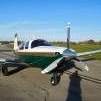










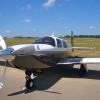
.thumb.png.7c67574d7b28f67b0b4a17760919b1ac.png)








